-
01-01-2015
Quality of life and physical activity in intensive care professionals from middle São Francisco
Revista Brasileira de Enfermagem. 2015;68(1):26-31
Abstract
Quality of life and physical activity in intensive care professionals from middle São Francisco
Revista Brasileira de Enfermagem. 2015;68(1):26-31
DOI 10.1590/0034-7167.2015680104i
Views0See moreObjective:
the objective was to assess the level of physical activity (LPA) and the quality of life QL of the professionals who work in ICU.
Method:
this was a cross-sectional study carried out in Adult ICUs. LPA was assessed by the International Questionnarie of Physical Activity – short form (IQPA-SF) and the QL by the Medical Outcomes Study 36 (SF-36) questionnaire.
Results:
it was classified active 50.89% out of a total of 59 professionals. Nursing technicians were considered the most active with 60.6%. The QL of the professionals who were considered active were better when compared to inactives, with statistical differences to the category of physical aspects limitation, social aspects and mental health. The working hours were higher than recommend, the physicians were higher than the physical therapist, nurses and technicians nurses (p = 0.046).
Conclusion:
physically active professionals who work in ICU had higher quality of life probably why have lower hours of work and consequently more free time to engage in physical activity.
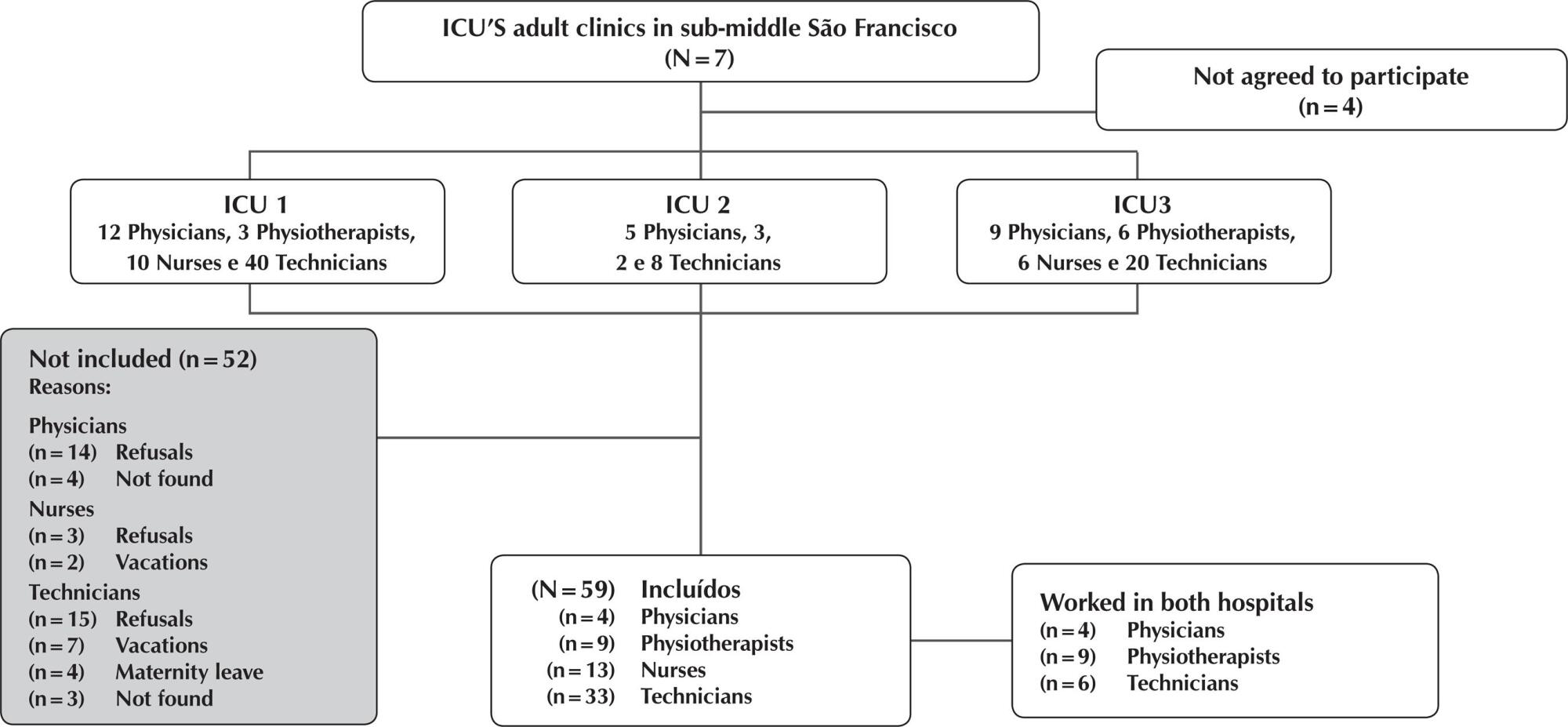
-
01-01-2015
Learning needs of Nursing students in technical vocational education
Revista Brasileira de Enfermagem. 2015;68(1):20-25
Abstract
Learning needs of Nursing students in technical vocational education
Revista Brasileira de Enfermagem. 2015;68(1):20-25
DOI 10.1590/0034-7167.2015680103i
Views0See moreObjective:
identify learning needs of students of Technical Vocational Education (TVE) in Nursing. Qualitative study conducted in a city of São Paulo state.
Method:
the subjects were students, teachers and coordinators of TVE and students of the bachelor degree who have had contact with TVE. Data collection was performed by questionnaire socioeconomic and cultural circles about the learning needs. For data analysis we used the content analysis.
Results:
it was found that students have difficulties contents not related to nursing as portuguese and mathematics, as well as introductory courses in the course of TVE which possibly may interfere negatively in learning specific content of nursing and the quality of health care.
Conclusion:
it is necessary to rethink the content taught and ways to teach from basic education, as well as the training of teachers who now works in the TVE.
-
01-01-2015
Serious game e-Baby: nursing students’ perception on learning about preterm newborn clinical assessment
Revista Brasileira de Enfermagem. 2015;68(1):13-19
Abstract
Serious game e-Baby: nursing students’ perception on learning about preterm newborn clinical assessment
Revista Brasileira de Enfermagem. 2015;68(1):13-19
DOI 10.1590/0034-7167.2015680102i
Views0See moreObjective:
to evaluate students opinion regarding e-Baby educational technology.
Methodology:
exploratory descriptive study in which participated a sample composed of 14 nursing Portuguese students that used e-Baby digital educational technology in an extracurricular course. To achieve the aim of the study, the data collection was realized through an opinion instrument in Likert scale including the possibility of commentaries by students. Is was also collected data of participants’ characterization.
Results:
students made very satisfactory evaluations regarding the game e-Baby, varying since usability acceptation through suggestions of expansion of the game to other nursing themes.
Conclusion:
serious game e-Baby can be considered a didactic innovation and motivator tool of learning. Besides, it demonstrates have adequate interface in design and educative function aspects, evocating intense interaction between user and computational tool.
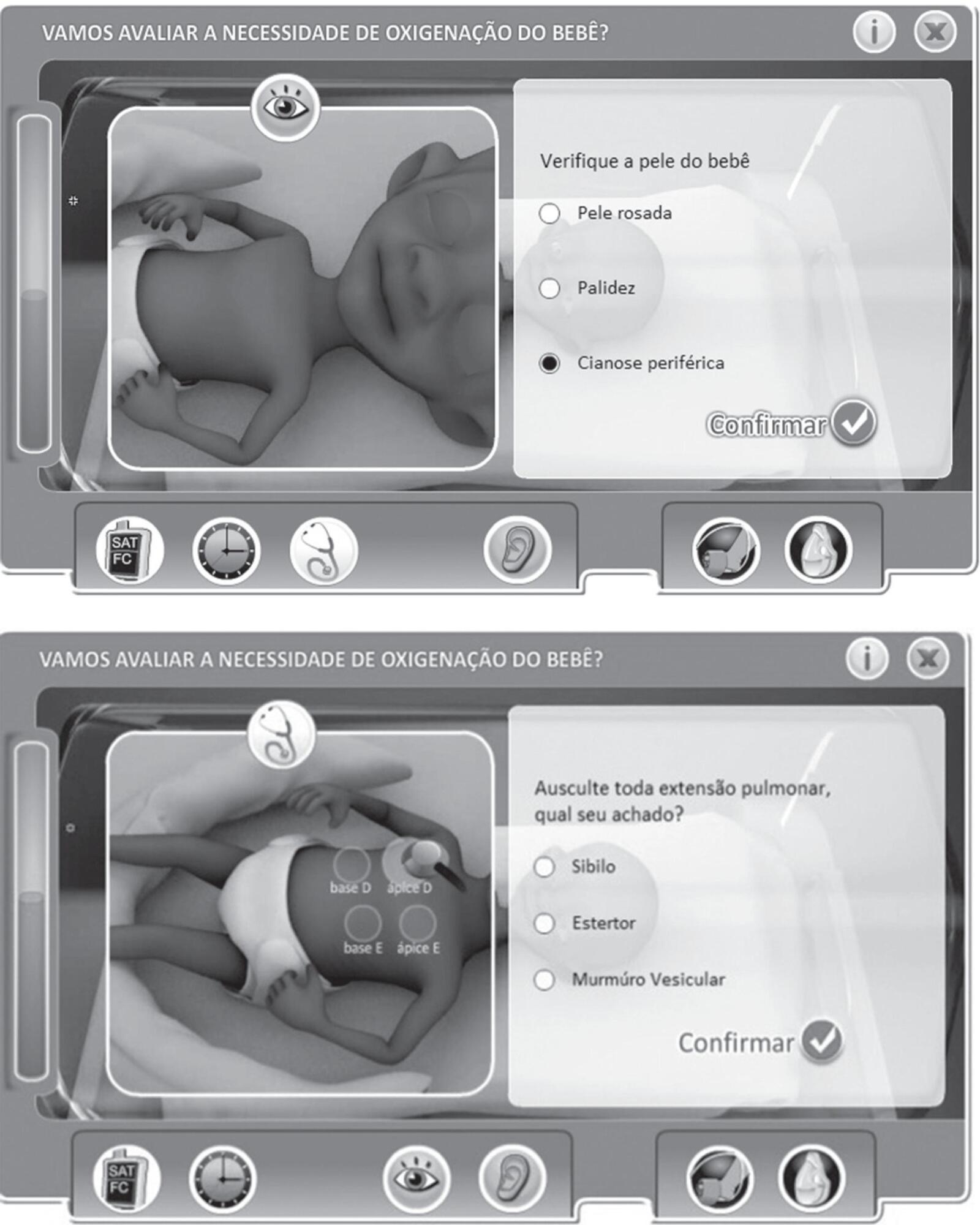
-
01-01-2015
Challenges beyond the scientific knowledge production
Revista Brasileira de Enfermagem. 2015;68(1):7-8
Abstract
Challenges beyond the scientific knowledge production
Revista Brasileira de Enfermagem. 2015;68(1):7-8
DOI 10.1590/0034-7167.2015680101p
Views0For several decades, innumerous appeals and reflections on how to build the nursing science and achieve visibility in the scientific world led researchers to make efforts to produce knowledge that contributed to the well-being of people, improving their quality of life, relieving their suffering and transforming the reality in which we live. In addition to […]See more
-
ORIGINAL ARTICLE08-13-2021
Prevalence of psychotropic drug use and conformity of therapeutic dose among mental health users
Revista Brasileira de Enfermagem. 2021;74(6):e20200679
Abstract
ORIGINAL ARTICLEPrevalence of psychotropic drug use and conformity of therapeutic dose among mental health users
Revista Brasileira de Enfermagem. 2021;74(6):e20200679
DOI 10.1590/0034-7167-2020-0679
Views0See moreABSTRACT
Objectives:
to identify the prevalence of psychotropic drug use according to their Anatomical Therapeutic Chemical classification among Psychosocial Care Center users and assess their prescription compliance based on the recommended therapeutic dose.
Methods:
this is an analytical study, based on documents, from the study of 389 records between September 2017 and May 2018. Associations between the presence of underdose or overdose and participants’ characteristics were assessed using the chi-square test, adopting a significant value of p <0.05.
Results:
the most used drugs were antipsychotics (74.7%), 16.0% of users with at least one medication with a dose below the therapeutic level and another 3.6% above the recommended therapeutic dose.
Conclusions:
greater nonconformities in the prescribed dose were related to antihistamines, antipsychotics and antidepressants, with underdosage associated with females and overdose with the report of hearing voices.
-
ORIGINAL ARTICLE05-09-2022
Beyond technology: Can artificial intelligence support clinical decisions in the prediction of sepsis?
Revista Brasileira de Enfermagem. 2022;75(5):e20210586
Abstract
ORIGINAL ARTICLEBeyond technology: Can artificial intelligence support clinical decisions in the prediction of sepsis?
Revista Brasileira de Enfermagem. 2022;75(5):e20210586
DOI 10.1590/0034-7167-2021-0586
Views0See moreABSTRACT
Objective:
To analyze the critical alarms predictors of clinical deterioration/sepsis for clinical decision making in patients admitted to a reference hospital complex.
Methods:
An observational retrospective cohort study. The Machine Learning (ML) tool, Robot Laura®, scores changes in vital parameters and lab tests, classifying them by severity. Inpatients and patients over 18 years of age were included.
Results:
A total of 122,703 alarms were extracted from the platform, classified as 2 to 9. The pre-selection of critical alarms (6 to 9) indicated 263 urgent alerts (0.2%), from which, after filtering exclusion criteria, 254 alerts were delimited for 61 inpatients. Patient mortality from sepsis was 75%, of which 52% was due to sepsis related to the new coronavirus. After the alarms were answered, 82% of the patients remained in the sectors.
Conclusions:
Far beyond technology, ML models can speed up assertive clinical decisions by nurses, optimizing time and specialized human resources.
-
ORIGINAL ARTICLE09-26-2022
Participatory development of educational technology in seeking patient safety in maternity hospitals
Revista Brasileira de Enfermagem. 2022;75(5):e20210701
Abstract
ORIGINAL ARTICLEParticipatory development of educational technology in seeking patient safety in maternity hospitals
Revista Brasileira de Enfermagem. 2022;75(5):e20210701
DOI 10.1590/0034-7167-2021-0701
Views1See moreABSTRACT
Objectives:
to develop a booklet as an educational technology, together with health professionals, patients and companions, aiming at their involvement in patient safety in maternity hospitals.
Methods:
a qualitative convergent care study, carried out in three stages at a maternity hospital in Belo Horizonte. The booklet construction took place between February and April 2021, with 13 professionals, 06 companions and 11 patients.
Results:
data content analysis was performed, creating three categories: Knowledge and experiences about patient and newborn safety in maternity hospitals; Challenges for involving patient and companion in safety actions; Assessment of patients, companions and professionals on the booklet construction process. The booklet construction involved the participation of health professionals, users and companions in all stages of the process.
Final considerations:
the participatory process enabled the creation of educational technology for the involvement of patients and companions in patient safety actions.
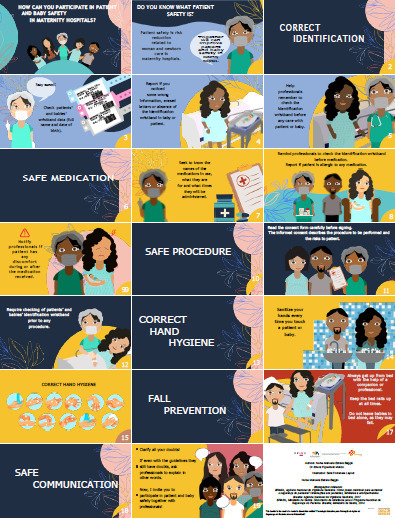
-
ORIGINAL ARTICLE06-04-2021
Information that (de)motivate women’s decision making on Planned Home Birth
Revista Brasileira de Enfermagem. 2021;74(4):e20200404
Abstract
ORIGINAL ARTICLEInformation that (de)motivate women’s decision making on Planned Home Birth
Revista Brasileira de Enfermagem. 2021;74(4):e20200404
DOI 10.1590/0034-7167-2020-0404
Views0See moreABSTRACT
Objective:
To understand how information about Planned Home Birth motivates or discourages women’s decisions on this location of birth.
Method:
Descriptive exploratory study, qualitative approach. Data collection carried out from February to April 2019, through semi-structured interviews with 14 women and documentary sources. The data were analyzed using Bardin’s content analysis process, with the help of ATLAS.ti 8.0.
Results:
The motivations for choosing Planned Home Birth are: respect for the autonomy and natural process of childbirth and delivery, support from a partner and trust in professionals. Aspects that discourage this choice are fear of complications, the need for a hospital medical structure, opinions that value risk.
Conclusion:
Women’s choices are based not only on information, but also on how that information is processed. This study demonstrated that the perception pertaining to the safety of Planned Home Birth is essential for making this decision.
-
ORIGINAL ARTICLE12-13-2019
Associated factors for acute kidney injury in preterm infants
Revista Brasileira de Enfermagem. 2019;72:118-124
Abstract
ORIGINAL ARTICLEAssociated factors for acute kidney injury in preterm infants
Revista Brasileira de Enfermagem. 2019;72:118-124
DOI 10.1590/0034-7167-2018-0231
Views0See moreABSTRACT
Objective:
to analyze the prevalence and factors associated with acute kidney injury in preterm newborns.
Method:
a cross-sectional study based on records data of preterm newborns hospitalized in two neonatal units in northwest Paraná State in 2015. For data analysis, the logistic regression model was used by the stepwise forward method and Fisher’s Exact Test.
Results:
132 preterm newborns, with a prevalence of 7.5% of acute kidney injury, were hospitalized. Majority of males, extremely preterm and very low birth weight. Associated factors were the use of non-nephrotoxic antibiotics and the presence of mechanical pulmonary ventilation, increasing the chance of developing acute kidney damage by 2.98 and 1.33/day, respectively. Hospitalization days constituted a protection factor.
Conclusion:
this study was able to identify the prevalence, and outline the variables associated with acute kidney injury in preterm newborns in a particular care situation.
-
ORIGINAL ARTICLE09-09-2022
Primary care nurses’ learning styles in the light of David Kolb
Revista Brasileira de Enfermagem. 2022;75(6):e20210986
Abstract
ORIGINAL ARTICLEPrimary care nurses’ learning styles in the light of David Kolb
Revista Brasileira de Enfermagem. 2022;75(6):e20210986
DOI 10.1590/0034-7167-2021-0986
Views0See moreABSTRACT
Objectives:
to identify primary care nurses’ learning styles in the light of David Kolb’s Experiential Learning Theory.
Methods:
a descriptive and exploratory qualitative study. A semi-structured interview script was used for data collection and content analysis for data processing.
Results:
primary care nurses showed different learning styles: diverging, which combines active experimentation and reflective observation; assimilating, which combines reflective observation and abstract conceptualization; converging, which associates abstract conceptualization and concrete experience; and accommodating, which unites concrete experience and active experimentation.
Final Considerations:
learning through experience requires that knowledge be understood and transformed. Nurses learn in different ways, as they have different learning styles. Therefore, recognizing nurses’ learning styles is important to foster ongoing professional development and ensure safe nursing care.
-
01-29-2021
Information about COVID-19 for deaf people: an analysis of Youtube videos in Brazilian sign language
Revista Brasileira de Enfermagem. 2021;74:e20200291
Abstract
Information about COVID-19 for deaf people: an analysis of Youtube videos in Brazilian sign language
Revista Brasileira de Enfermagem. 2021;74:e20200291
DOI 10.1590/0034-7167-2020-0291
Views0See moreABSTRACT
Objective:
to analyze YouTube videos with information about COVID-19 in Brazilian sign language.
Methods:
a cross-sectional study conducted with 402 videos from the YouTube sharing platform. Chi-square, Fisher’s exact, Mann-Whitney and Spearman’s correlation tests were used.
Results:
the videos mainly covered COVID-19 prevention (20.6%). There was a positive correlation between video length and number of views (p<0.001). The length of more than 20 minutes was associated with narration only in BSL (p=0.37) and in BSL with audio (p<0.001), while videos with less than 20 minutes were associated with simultaneous narration in BSL, audio and subtitles. Those with narration only in BSL had a similar number of views to those narrated with subtitles and/or audio (p=0.998).
Conclusion:
the videos were mostly short and included COVID-19 prevention. The longer the video, the greater the number of views. Regardless the presentation of narrations, the videos had a similar number of views.
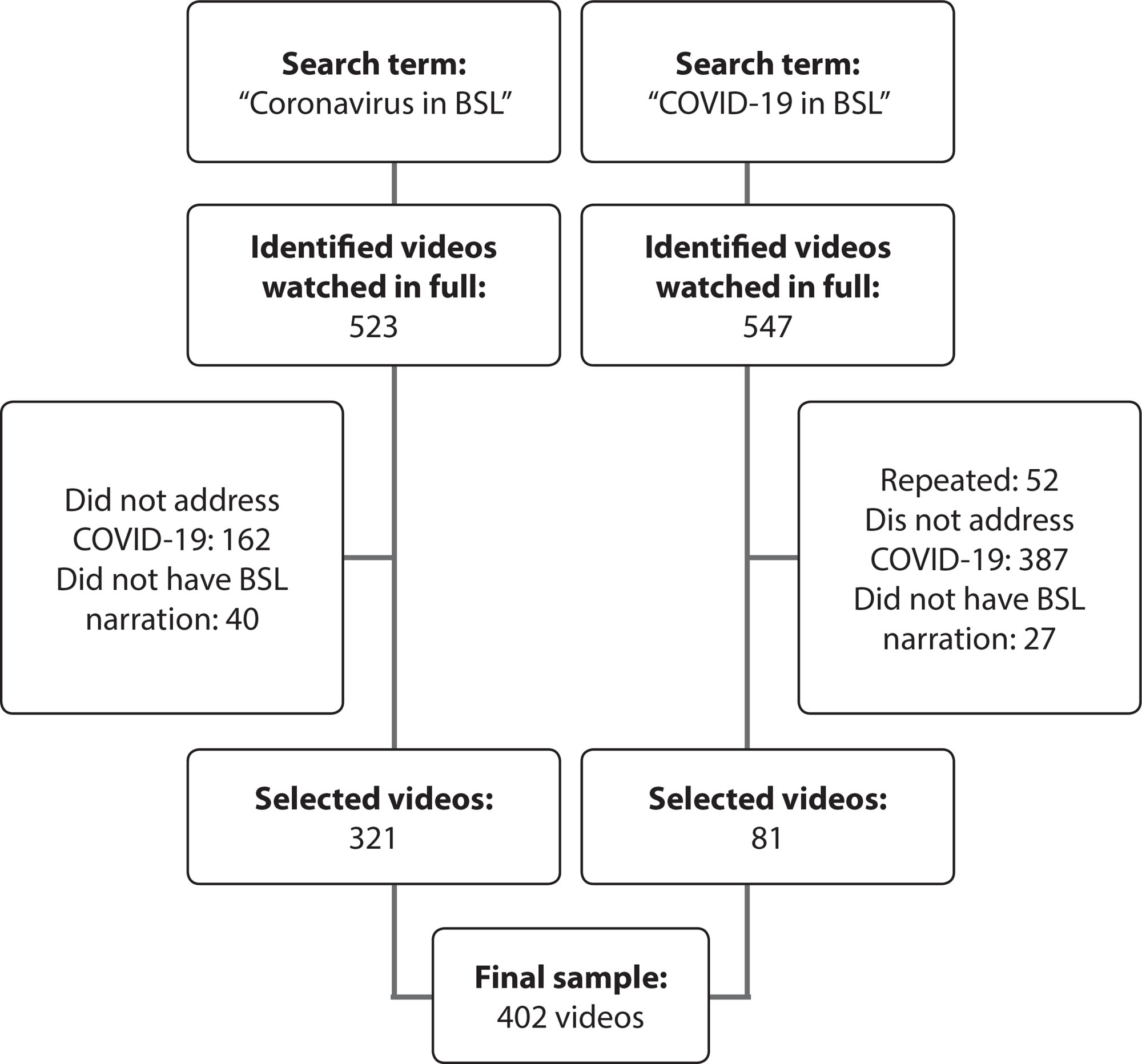
-
ORIGINAL ARTICLE06-18-2021
Association between social network and functional disability in brazilian elderly
Revista Brasileira de Enfermagem. 2021;74(3):e20200770
Abstract
ORIGINAL ARTICLEAssociation between social network and functional disability in brazilian elderly
Revista Brasileira de Enfermagem. 2021;74(3):e20200770
DOI 10.1590/0034-7167-2020-0770
Views0See moreABSTRACT
Objective:
to verify the association between social network and functional disability in elderly Brazilians.
Methods:
a cross-sectional study with secondary data of 11,177 elderly people, available on Brazilian Institute of Geography and Statistics’ website. Social network components were having trusted friends/relative, living with their spouse, practicing social activity, performing voluntary or paid work. The outcome was functional disability, measured by the difficulty in performing instrumental and basic activities of daily living. Logistic regression models were used.
Results:
disability prevalence for instrumental activities was 28.0% (95%CI: 26.7-29.4), and for basic activities, 15.5% (95%CI: 14.4-16.6). Not having components social network components was associated with greater chances of functional disability, especially among women.
Conclusion:
there was an association between not having social network components with functional disability. There are differences in this association according to sex. Strengthening actions that expand social network can reduce the chance of this outcome in elderly people.
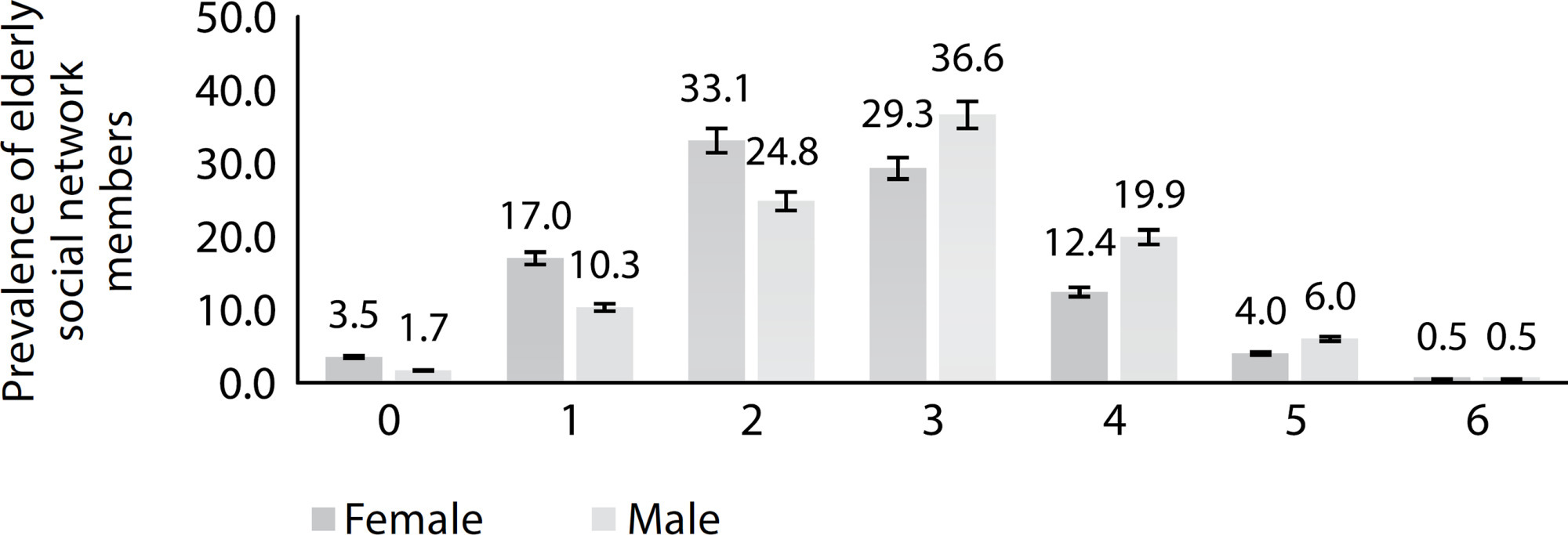
Search
Search in:
Nuvem de Tags
Enfermagem (930)Cuidados de Enfermagem (269)Atenção Primária à Saúde (239)Idoso (208)Educação em Enfermagem (151)Segurança do Paciente (150)Saúde Mental (145)Educação em Saúde (139)Estudos de Validação (131)Qualidade de Vida (104)Tecnologia Educacional (100)Promoção da Saúde (99)COVID-19 (91)Criança (91)Família (87)Enfermagem Pediátrica (86)Saúde do Trabalhador (86)Adolescente (85)Saúde Pública (82)Estudantes de Enfermagem (77)



